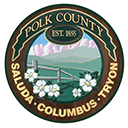Managing Drought-Stressed Pastures
go.ncsu.edu/readext?968459
en Español / em Português
El inglés es el idioma de control de esta página. En la medida en que haya algún conflicto entre la traducción al inglés y la traducción, el inglés prevalece.
Al hacer clic en el enlace de traducción se activa un servicio de traducción gratuito para convertir la página al español. Al igual que con cualquier traducción por Internet, la conversión no es sensible al contexto y puede que no traduzca el texto en su significado original. NC State Extension no garantiza la exactitud del texto traducido. Por favor, tenga en cuenta que algunas aplicaciones y/o servicios pueden no funcionar como se espera cuando se traducen.
Português
Inglês é o idioma de controle desta página. Na medida que haja algum conflito entre o texto original em Inglês e a tradução, o Inglês prevalece.
Ao clicar no link de tradução, um serviço gratuito de tradução será ativado para converter a página para o Português. Como em qualquer tradução pela internet, a conversão não é sensivel ao contexto e pode não ocorrer a tradução para o significado orginal. O serviço de Extensão da Carolina do Norte (NC State Extension) não garante a exatidão do texto traduzido. Por favor, observe que algumas funções ou serviços podem não funcionar como esperado após a tradução.
English
English is the controlling language of this page. To the extent there is any conflict between the English text and the translation, English controls.
Clicking on the translation link activates a free translation service to convert the page to Spanish. As with any Internet translation, the conversion is not context-sensitive and may not translate the text to its original meaning. NC State Extension does not guarantee the accuracy of the translated text. Please note that some applications and/or services may not function as expected when translated.
Collapse ▲Currently, about three quarters of Polk County is considered by the U.S. drought
monitor to be under moderate drought conditions and the lowest quarter of the county is under a severe drought. Unfortunately, it has been a bad fall for re-seeding fescue pastures or planting winter annuals. The following tips will help save your pastures from complete desiccation and ensure a best chance for rebound once a rainfall event does occur.
During times of drought, it’s often tempting to open all the gates and allow your horses or livestock to graze any remaining forage that can be found. However, this not only damages the current forage by removing vital energy-producing and ground-shading leaf area, but reduces root depth and extends the recovery period once the dry conditions subside. Grazing continued on drought-stressed forage can reduce the pasture’s productivity for not one, but for many future grazing seasons. The best management strategy to reduce pasture damage is to select a
“sacrifice pasture”. A sacrifice pasture is one that you knowingly damage, by containing all livestock and feeding stored or other sources of emergency forage (such as crop residues), as a means to save the remaining pasture land. Permanently installed sacrifice or dry lots are essential to smaller acreages or farms operating with higher than recommended stocking rates. If you currently only utilize one continuous pasture, you can also create a sacrifice area by restricting animals to a smaller portion of the pasture- utilizing temporary confinement tools such as electrified polywire fencing or livestock panels.
Of course, a sacrifice pasture or dry lot must contain plenty of water and shade, but choosing your worst pasture as a means for renovation can be a great tool. Just as poorly producing animals are often culled, so too should your pastures. A pasture with fewer than 50% desirable forage plants is a good candidate for renovation. By choosing the lowest producing pasture as your sacrifice area, you are able to remove the majority of the existing competitive forage, trample problem weeds, and deposit a high concentration of recycled nutrients from manure left by fed livestock. This winter, clover or annual ryegrass can be frost seeded into damaged
pastures for additional early spring grazing. This is also a great time to consider planting a more drought-tolerant forage specie in these designated sacrifice areas next spring. Furthermore, feeding hay now and deferring grazing until winter allows you to source additional hay if needed, before area supply dwindles and prices increase.
Deferred grazing allows your forage the best chance to accumulate with even the smallest amount of rainfall. This season, our chances for a normal fescue stockpile is dwindling, but on pastures with ample remaining forage cover, even a minor amount of precipitation can contribute to some attributable forage growth, which can then be grazed later. The more forage cover that is left on a pasture, the better those plants will be at combating and recovering from dry conditions, as a remaining forage canopy will reduce the amount of water evaporated from the soil and reduce surface soil temperature.
Once drought conditions subside, it may be tempting to return animals to pasture as soon as green-up occurs. Grazing forage that has been weakened by drought too soon can cause further damage and increase recovery time. It’s best to stick recommended grazing height guidelines for your forage type (6-8 inches for fescue and 3-4 inches for bermudagrass). Once warm season perennials are dormant, grazing damage will be greatly reduced, although quality will do the same.




